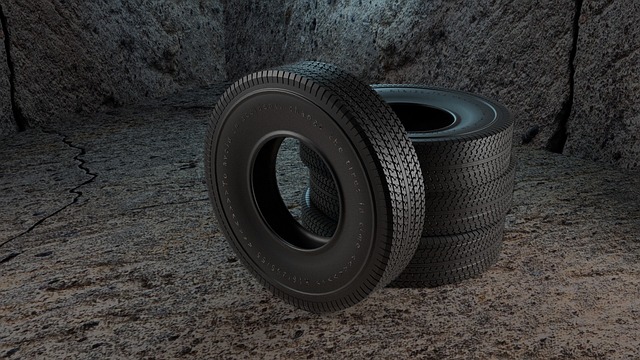In Denver, the Emerald Ash Borer (EAB) infestation threatens urban ash trees, but a multi-faceted treatment approach is making headway. This includes chemical interventions, biological controls like parasitic wasps, early detection through tree inspections, and community education on sustainable tree care practices. By combining these strategies, Denver aims to preserve its urban forests, ensuring the long-term health and resilience of its beloved tree canopies against EAB and other pests.
Denver’s urban tree canopy is a vital component of our city’s character, offering environmental benefits and aesthetic appeal. However, the emerald ash borer (EAB) poses a significant threat to these valuable trees. This article explores comprehensive strategies to combat EAB infestation in Denver neighborhoods, focusing on treatment options and long-term care plans. By understanding the issue and implementing effective solutions, we can preserve and enhance our urban forest for future generations. Discover practical guides and expert insights on treatment for emerald ash borer in Denver neighborhoods.
- Understanding Urban Tree Preservation and Emerald Ash Borer (EAB) Infestation in Denver
- Treatment Options for EAB in Denver Neighborhoods: A Comprehensive Guide
- Long-term Care Strategies to Protect and Enhance Urban Tree Canopies in Denver
Understanding Urban Tree Preservation and Emerald Ash Borer (EAB) Infestation in Denver

In urban areas like Denver, tree preservation is a vital component of sustainable city management. It involves protecting and maintaining existing trees to enhance the environment, reduce costs, and preserve biodiversity. This approach recognizes that mature trees provide numerous ecological benefits, including improved air quality, reduced noise pollution, and enhanced aesthetics that contribute to higher property values. However, urban ecosystems face unique challenges such as the Emerald Ash Borer (EAB) infestation, a destructive force impacting ash tree populations across Denver neighborhoods.
The EAB, an invasive insect, poses a significant threat to the health of ash trees in urban settings. It feeds on the inner bark of ash species, disrupting nutrient transport and eventually leading to tree decline and death. To combat this issue, Denver residents and local authorities have implemented various treatment strategies for Emerald Ash Borer in Denver neighborhoods. These include biological control methods, chemical treatments, and tree replacement programs aimed at minimizing the impact of EAB infestation while promoting long-term urban forest health and resilience.
Treatment Options for EAB in Denver Neighborhoods: A Comprehensive Guide

In Denver neighborhoods, addressing the threat posed by the Emerald Ash Borer (EAB) requires a comprehensive understanding of available treatment options. One effective approach involves the strategic use of insecticides to protect ash trees from EAB infestation. These chemicals can be applied directly to the tree bark or as soil drenches, targeting the borer larvae before they cause significant damage. Local arborists recommend selecting insecticides with high efficacy against EAB and following application guidelines strictly for optimal results.
Additionally, biological control methods have gained popularity. This involves introducing natural enemies like parasitic wasps that lay their eggs on EAB larvae, thereby reducing the borer population. Planting native tree species resistant to EAB is another sustainable treatment option. Neighborhoods can also implement early detection and rapid response strategies, including regular tree inspections and immediate removal of infected trees to prevent the spread of the borer. These combined efforts contribute to a robust treatment regimen for EAB in Denver neighborhoods, ensuring the preservation of urban ash trees.
Long-term Care Strategies to Protect and Enhance Urban Tree Canopies in Denver

To protect and enhance urban tree canopies in Denver, long-term care strategies are essential. One significant threat to these vital green spaces is the Emerald Ash Borer (EAB), an invasive beetle that has infested many neighborhoods across the city. Effective treatment for EAB involves a comprehensive approach, including regular monitoring, early detection, and targeted applications of insecticides or biological controls. Property managers and urban foresters in Denver should collaborate to implement these treatments, ensuring the health and longevity of ash trees in public parks, streetscapes, and residential areas.
Additionally, fostering a diverse urban tree canopy can improve resilience to pest and disease outbreaks like EAB. This involves planting a mix of native and adaptable tree species that are less susceptible to specific pests and diseases. Community involvement is also crucial; educational programs can raise awareness about proper tree care practices, responsible pesticide use, and the importance of preserving urban forests. By combining these strategies, Denver can safeguard its beloved tree canopies and ensure they continue to provide ecological, economic, and social benefits for years to come.
In conclusion, protecting Denver’s urban tree canopies is a collaborative effort that involves understanding threats like the Emerald Ash Borer infestation and implementing tailored treatment strategies. By adopting comprehensive long-term care plans, residents and local authorities can preserve these vital green spaces, ensuring a healthier and more vibrant city for future generations to enjoy. Treating and managing EAB in Denver neighborhoods is a key step towards maintaining the city’s unique natural landscape.
